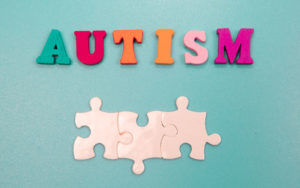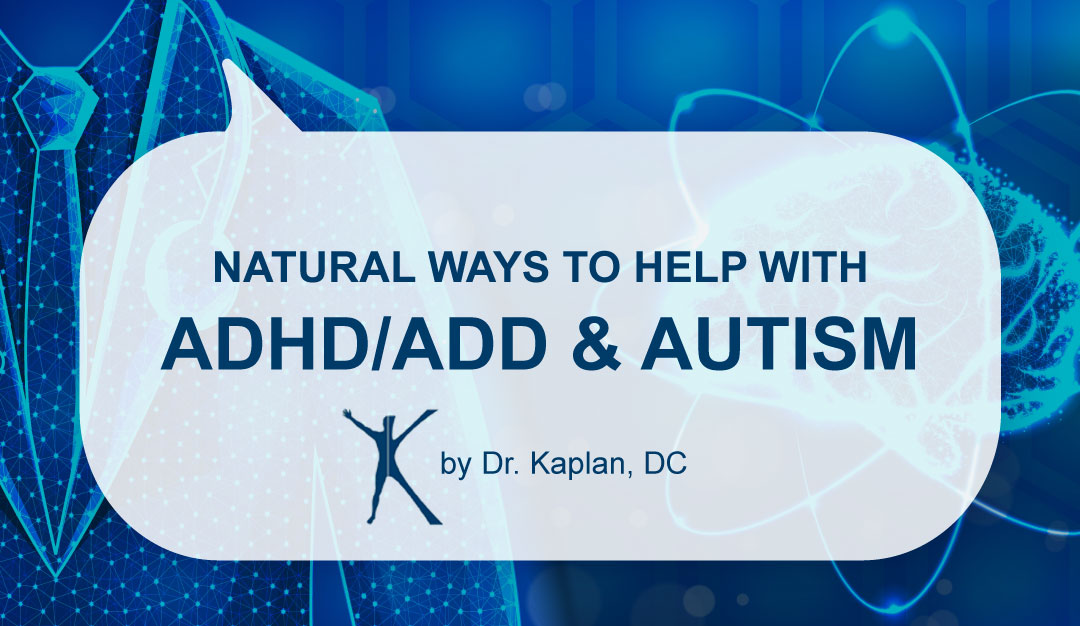According to the CDC in 2018, approximately 1 in 59 children is diagnosed with an autism spectrum disorder, 1 in 37 boys, and 1 in 151 girls. Needless to say, these are huge numbers.
It is true, diagnosis criteria have changed in the past several years – but this is not the whole story. There actually are many more autistic children now, but the jury is out on what exactly is causing this significant increase. There are some very probable environmental factors that are more common now than they were 30 years ago that are influencing the rise in autism in children. As parents, we need to both be aware and do our part to reduce our children’s exposure to these dangers.
 In my opinion, one important factor contributing to increased autism rates is the extreme amount of chemical exposure we face in our society today. Much of our sanitary products, foods, storage containers, antibacterial products, clothes, masks, furniture, cars, plastics, cleaning products, cosmetics, candles, sprays, and even soaps and body washes are filled with unrecognizable artificial chemical ingredients that might not have even existed 30 years ago. We cannot be sure that these ingredients are safe, and we also can’t tell what long-term exposure could cause. Furthermore, heavy metals can be found in many places including public water, pharmaceuticals, cosmetics, and in the air from car exhaust.
In my opinion, one important factor contributing to increased autism rates is the extreme amount of chemical exposure we face in our society today. Much of our sanitary products, foods, storage containers, antibacterial products, clothes, masks, furniture, cars, plastics, cleaning products, cosmetics, candles, sprays, and even soaps and body washes are filled with unrecognizable artificial chemical ingredients that might not have even existed 30 years ago. We cannot be sure that these ingredients are safe, and we also can’t tell what long-term exposure could cause. Furthermore, heavy metals can be found in many places including public water, pharmaceuticals, cosmetics, and in the air from car exhaust.
Another issue is mold. There are over 100,000 different types of mold, so if you get a professional analysis, it is good if they test more than just the top 3-5 types. You hope that your children are safe in schools, but oftentimes the old buildings have lead in the water and mold in the structures. Exposure to mold can have serious health repercussions including issues with brain function. Also, if you live in an older house, basements, poorly ventilated bathrooms, and old leaks are prime spots for mold, so make sure you test for mold in addition to making sure your water is free from heavy metals. Not only can a poor diet, chemical overload, and mold or heavy metal exposure contribute to brain inflammation and autistic symptoms, but they may also be linked to ADD/ADHD, Tourette’s Syndrome, dyslexia, seizures, OCD, Aspergers, bipolar, schizophrenia, and other neurological disorders.
 Problems like Attention Deficit Disorder (ADD) and Attention-deficit/hyperactivity disorder (ADHD) are neurological disorders that may be helped with brain-based exercises, in addition to increased movement and major changes in diet. Remember that breaks should be worked into school, work, or homework time every 20 minutes to increase focus. Caffeine, processed foods, and sugar should also be avoided.
Problems like Attention Deficit Disorder (ADD) and Attention-deficit/hyperactivity disorder (ADHD) are neurological disorders that may be helped with brain-based exercises, in addition to increased movement and major changes in diet. Remember that breaks should be worked into school, work, or homework time every 20 minutes to increase focus. Caffeine, processed foods, and sugar should also be avoided.
One of the most important signs of many children with developmental disorders such as ADD/ADHD or autism/ASD is the retention of primitive reflexes. Most people don’t realize that they have probably experienced primitive reflexes firsthand if they’ve ever played with a baby. When a baby grasps your finger, that’s actually a normal palmar grasp primitive reflex. The concern is if such reflexes occur after the first year of age. Certain reflexes are good, like when your leg kicks out after the reflex hammer hits your knee. However, some reflexes are bad, like if the bottom of your foot gets rubbed and your big toe goes up, which is called a Babinski sign. If a child has too many of these bad reflexes, that means their brains are not functioning properly. Therefore a great tool to address these retained primitive reflexes is to start repairing the brain. Furthermore, motor and sensory exercises can be performed to specific areas of the brain with the most dysfunction which is usually, but not always, the frontal lobe.
 The good news is that functional brain exercises help to integrate the left and right brain to create balance and homeostasis which will help improve eye contact, emotional activity, reduce distractibility, improve behavior and memory, focus, and organizational skills. Children with developmental delays can benefit from balancing the right and left frontal cortex and students can benefit and improve their academic performance with the help of functional brain exercises. Many get distracted easily or have difficulty paying attention. Children with ADHD have similar symptoms, but also have increased hyperactivity or excessive restlessness. They also tend to fidget, shake their legs restlessly or tap pens on desks. Of course, such issues often lead to these children having trouble in school or studying, or being seen as disruptive in classes.
The good news is that functional brain exercises help to integrate the left and right brain to create balance and homeostasis which will help improve eye contact, emotional activity, reduce distractibility, improve behavior and memory, focus, and organizational skills. Children with developmental delays can benefit from balancing the right and left frontal cortex and students can benefit and improve their academic performance with the help of functional brain exercises. Many get distracted easily or have difficulty paying attention. Children with ADHD have similar symptoms, but also have increased hyperactivity or excessive restlessness. They also tend to fidget, shake their legs restlessly or tap pens on desks. Of course, such issues often lead to these children having trouble in school or studying, or being seen as disruptive in classes.
First off, people with ADD, and especially ADHD, need plenty of movement throughout the day. Prolonged sitting is harmful to an underdeveloped brain, so I recommend taking planned “movement breaks” every 20-30 minutes. I know that many teachers read this column, so I hope you will consider building in breaks like this for all students – not just those with ADD or ADHD. This will increase focus and decrease distraction. Even a neurotypical brain starts to lose focus after 30 minutes, making it difficult to retain information. The same thing should be done at home while doing homework or studying. Even a short 20-second break every 20 minutes to do some physical exercise can be highly beneficial for information retention. You can do some push-ups, jumping jacks, leg kicks, shadow boxing, hula hoop, dancing, jumping rope, or whatever you like that gets your body moving.
 Finally, lifestyle and nutrition are extremely important. We all remember days of going out to play with friends all day, then when the streetlights came on we ran home for a nice home-cooked dinner. We spent time outside in the sun and in nature and had companionship. All of these things are good for the frontal cortex. Fresh food is also important – people with ADD/ADHD should also avoid processed foods, sugar, stimulants, caffeine, juices, food dyes, and preservatives. It is much healthier to eat organic foods that are not sprayed with pesticides, and eat each color of the rainbow with fruits and vegetables every day. You can add in wild Atlantic, Norwegian, or Icelandic Fish, Organic free-roaming humanely raised poultry or eggs, and organic grass-fed meats with no steroids or antibiotics. Remember, “You are what you eat,” so if you eat an animal that is depressed, anxious, gets no exercise, is fed GMO corn full of Round-Up, or that is pumped with harmful drugs, you take in all of that bad stuff into your own body.
Finally, lifestyle and nutrition are extremely important. We all remember days of going out to play with friends all day, then when the streetlights came on we ran home for a nice home-cooked dinner. We spent time outside in the sun and in nature and had companionship. All of these things are good for the frontal cortex. Fresh food is also important – people with ADD/ADHD should also avoid processed foods, sugar, stimulants, caffeine, juices, food dyes, and preservatives. It is much healthier to eat organic foods that are not sprayed with pesticides, and eat each color of the rainbow with fruits and vegetables every day. You can add in wild Atlantic, Norwegian, or Icelandic Fish, Organic free-roaming humanely raised poultry or eggs, and organic grass-fed meats with no steroids or antibiotics. Remember, “You are what you eat,” so if you eat an animal that is depressed, anxious, gets no exercise, is fed GMO corn full of Round-Up, or that is pumped with harmful drugs, you take in all of that bad stuff into your own body.

